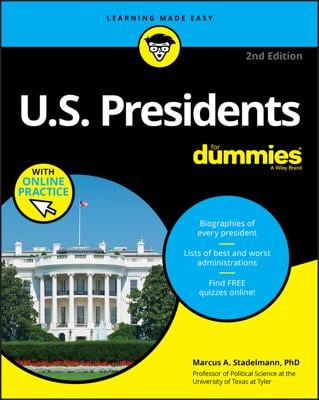Three Republicans succeeded Woodrow Wilson as president in the 1920s — Warren G. Harding, Calvin Coolidge, and Herbert Hoover — and all three were firmly in favor of the status quo, or at least what the status quo was before the war.
Harding was a handsome, affable newspaper publisher and politician from Ohio. His record as a state legislator and U.S. senator was almost entirely without distinction, but he was a popular guy anyway — especially with newly enfranchised women voters — and was easily elected in 1920.
Harding’s administration was ripe with scandal, much of it involving buddies he appointed to various offices. The worst scandal was called Teapot Dome and involved the secret leasing of public oil reserves to private companies by Harding’s Secretary of Interior Albert B. Fall, in return for $400,000 in interest-free “loans.”
Harding himself was never implicated in any of the scandals, but he suffered nevertheless.
“I have no trouble with my enemies,” he told a reporter, “but my damned friends … they’re the ones that keep me walking the floor nights.”
Harding died suddenly while visiting San Francisco in August 1923, probably of a stroke. (His wife inexplicably refused to allow an autopsy, so the exact cause was never established.) He was succeeded by Coolidge, his vice president.
Silent Cal, as he was called, was from Vermont and was quite possibly less interested in being president than any man who ever held the office. (But he did enjoy playing mean practical jokes on the White House staff and having his photo taken while wearing silly headgear.)
After finishing out Harding’s term, Coolidge was easily elected to his own term in 1924. His winning platform was that government should do what it could to promote private enterprise and then get out of the way.
“The man who builds a factory builds a temple,” Coolidge pronounced. “The man who works there worships there.”
Coolidge fit the times perfectly. His philosophy was that not doing anything was the best course nine times out of ten. Most of the voting public didn’t want or need anything from the federal government other than a military in time of war and someone to deliver the mail. Even though he wasn’t exactly overworked in the job, Coolidge decided he had had enough in 1928 and chose not to run again.
In 1928, the country elected Hoover as president. He was an Iowa farm boy turned civil engineer who had won international kudos for organizing massive food programs for Europe after World War I. Hoover easily defeated New York Gov. Al Smith, extending Republican control of the White House. Like Harding and Coolidge, Hoover was a firm believer that America was on the right track economically.
“We in America are nearer to the final triumph over poverty than ever before in the history of the land,” Hoover said. “We shall with the help of God be in sight of the day when poverty will be banished from the nation.”

